18 March, 2000
House Mouse; Intertidal collection at Laggard Island
Question 28: What single species of animal on earth has the greatest biomass?
Every Saturday at 2 pm is House Mouse. Time for everyone to spend an hour
cleaning up some part of the station. With a population of around 35 people,
everyone has several different jobs to do and there isn't a separate
janitorial staff. The station manager posts a list with everyone's assignment
for the week. We rotate so no one ends up with the same job twice in a row.
All common use areas get cleaned. Last week I had the women's bathroom in
GWR. This week I am cleaning the kitchen, dining room and food storage area
with four other people. With once a week scrubbing, dusting, sweeping and
mopping nothing ever gets very dirty.
In order to be back in time to take part in House Mouse, our group went out
to Laggard Island at 9 am for a combination dive and intertidal collection
trip. The weather was chilly but still remarkably clear. The mountains of
the Antarctic Peninsula were visible in the distance. Chuck and Katrin,
diving today, were dropped off at the mouth of the cove we were going to land
in. They worked their way up to the shore underwater while Bill, Bruce, Jim
and I landed the Zodiac on the boulder beach.
As always, there were fur seals to avoid. The beach has high rocky hills on
each side and a deep cove in front and back. The small tidal pool area where
Bruce and I wanted to collect algae and amphipods is on the far side of the
beach, beyond 15 fur seals. By skirting around the water's edge and
clambering up onto the rocks we managed to reach the tide pools.
With aquarium nets we fished out around a thousand amphipods, each less than
a centimeter long. They are herbivores (something that eats plants, in this
case algae) so we are interested in using them for bioassays in the lab.
After netting them, we put them into a couple of large plastic jars filled
with algae and seawater. We also took some time collecting three different
species of algae. They were small so it took quite a bit of scraping and
plucking to get a large enough quantity for all of the testing and extractions
we need to do.
While we were collecting there were fur seals cavorting in the water,
swimming in and out of the cove. Our attention was mostly divided between
collecting and keeping an eye out for the next big wave. There were quite a
few surging swells that came down the cove and tried to swamp our boots.
Focusing on these left us very surprised when a fur seal came up out of the
water onto the small rocky outcropping we were on! He/she was very
aggressive, growling, waving head and neck around and advancing until our
shouting and banging of bottles convinced it to retreat. We rethought our
collecting strategy and after that had one person up higher on the rocks
looking out for seals while the other collected. Good thing, because the
seal(s?) came back again and again.
Answer 27: The crabeater seal, which eats krill and not crabs (the Antarctic
has no crabs), has a population of 8-10 million. Its numbers have grown
because there are no longer large numbers of whales competing for krill.
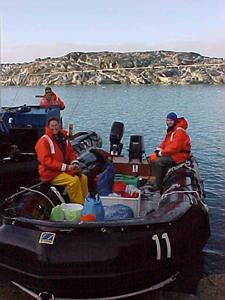
Ready to go out in the Zodiac.
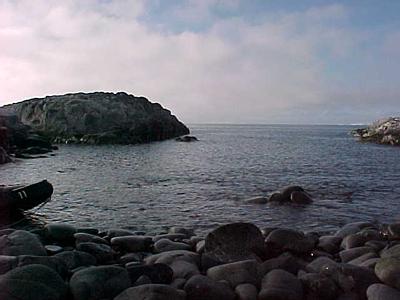
View out of Laggard Island cove towards Peninsula.
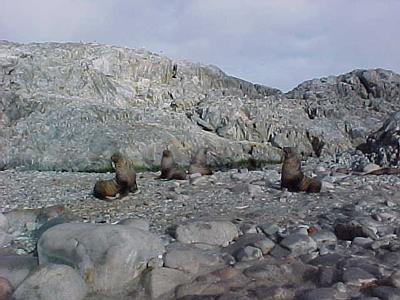
Fur Seals on Laggard Island beach.
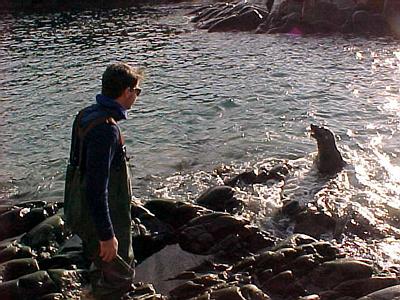
Fur Seal and Bruce Furrow.
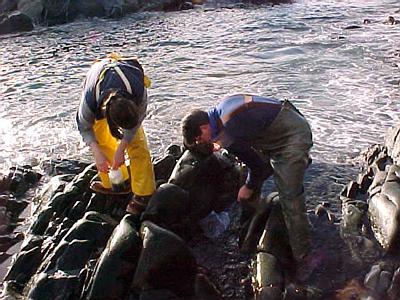
Joanna and Bruce collecting in the tidepools.

Contact the TEA in the field at
.
If you cannot connect through your browser, copy the
TEA's e-mail address in the "To:" line of
your favorite e-mail package.
|
